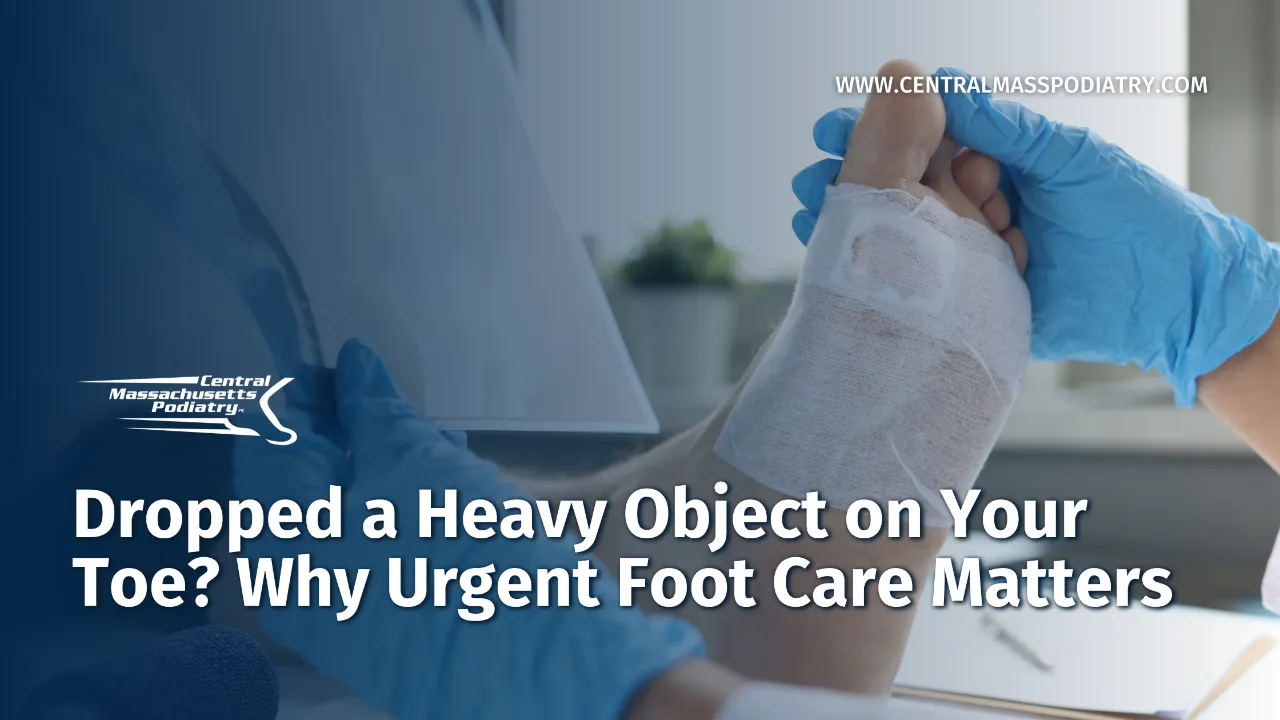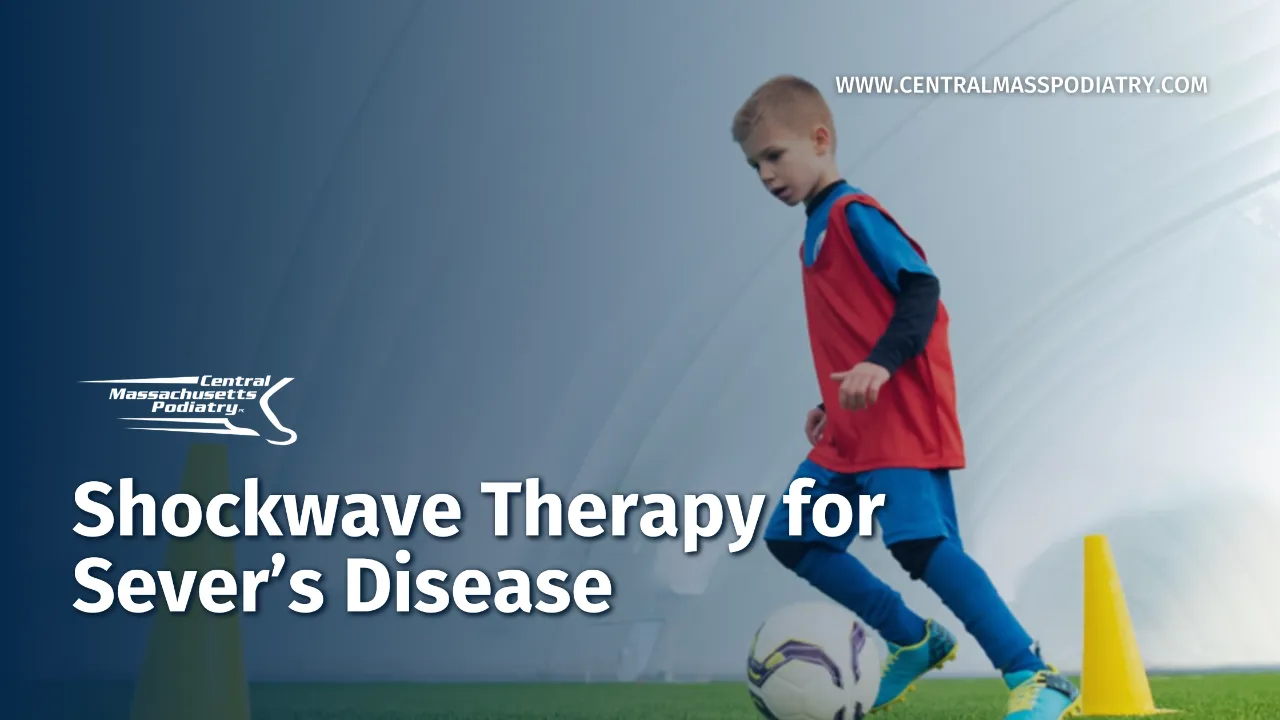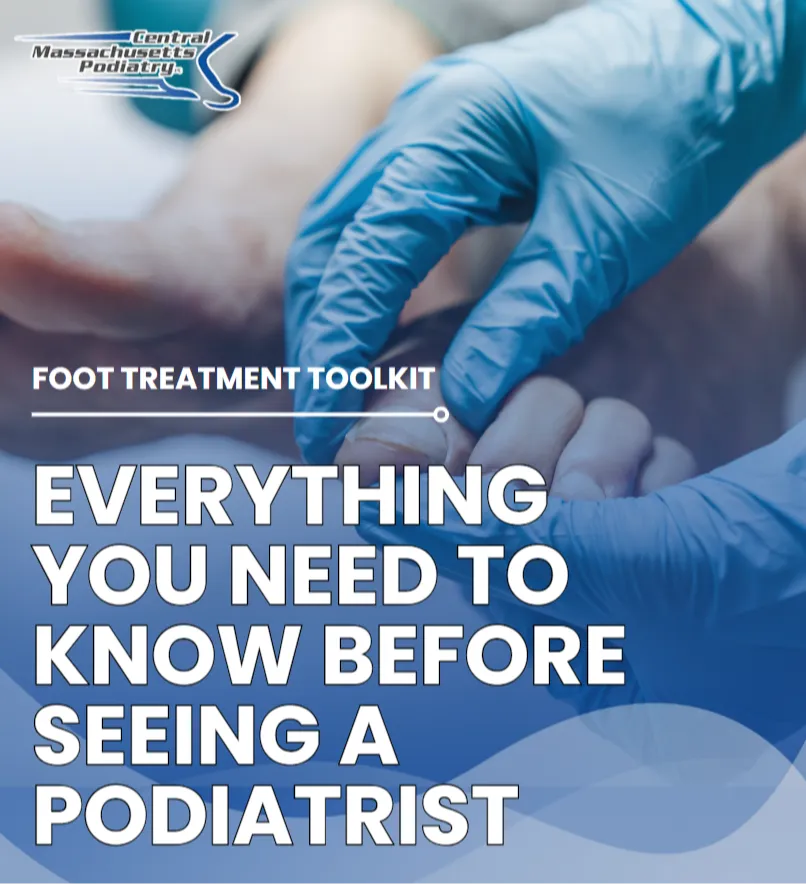Surgical Correction of Hallux Limitus (Big Toe Joint Arthritis)

Hallux limitus an arthritic condition that affects the big toe joint in your foot. In a previous blog, I discussed extensively a condition called functional hallux limitus, specifically the differences between functional hallux limitus and structural hallux limitus, which are both limited motion through your big toe joint. If left untreated, the limited motion causes breakdown of the big toe joint that can progress to the point that non-surgical treatments are no longer going to help. This blog is a discussion about the continuum of surgical treatment for an arthritic big toe joint when other treatments no longer help.

Big toe joint anatomy: The 1st metatarsal-phalangeal joint (MTPJ) is composed of the 1st metatarsal, the proximal phalanx of the big toe (hallux) and 2 small bones under the 1st metatarsal called sesamoids.
As a refresher, the big toe joint is a more complicated joint than you may think. There are actually 4 bones that interact here. The proximal phalanx is the base of your big toe (hallux). The 1st metatarsal is the long bone behind that (closer to your heel). Lastly, the sesamoids are 2 small oval shaped bones underneath the 1st metatarsal that act like your knee cap, but for your big toe. They serve as a fulcrum to give a muscle (your flexor hallucis brevis muscle, specifically) leverage to pull down towards the floor which allows you to push off harder during the toe-off phase of walking gait. Where each of the bones interact with each other, there is cartilage. That is specialized tissue that allows bones to have smooth, gliding interactions with each other and also serves to cushion the structural parts of the bones from colliding.
A joint that a) does not move well while bearing weight, b) is poorly aligned, or c) has started to break down with loss of cartilage, will result in continued break down of the joint if nothing is done to correct it. This is how arthritis develops at the big toe joint. In early stages of the process, it can sometimes be arrested with a custom orthotic that helps the joint move better. As the joint continues to break down, the cartilage will start to be injured and wear away. The process becomes more painful as it progresses. Sometimes, pieces of cartilage break off within the joint which causes more breakdown of the joint. Once the cartilage has begun to wear away, bone from the metatarsal and the phalanx will begin to bump/smash into each other. Bone is not a particularly smart organ; if you apply a force to bone, whether pushing or pulling, it will do its one move and make more bone in the area of that force. Over time, this results in bone spur production at the perimeters of the joint which limit how much the joint can move.If this process continues unabated, the joint will have so much bone production that it will ultimately stop moving, at which point it is called hallux rigidus. This can take years to occur. On the way to that end point, though, the joint continues to lose range of motion and typically is very painful.




Surgical treatment for hallux limitus, like the breakdown of the joint, is on a continuum. The minimally damaged joint typically requires minimal surgical work to improve it. The very damaged or “end-stage arthritis” joint requires the most extensive surgical work and is frequently not salvageable as a useful joint which will then require fusion. Complicating all of this is that the joint may appear OK on X-rays in the office, but look much worse in the operating room. This is because cartilage does not show up on X-ray and can only be approximated. The quality of the cartilage corresponds to how damaged a joint is, which oftentimes determines the ultimate success of a surgery. For this reason, I will often consent patients for multiple possible procedures and will decide what to do based on what we actually see within the joint during surgery.

Surgical options for hallux limitus are broadly categorized as joint sparing procedures and joint sacrificing procedures. This can get a bit technical so for the purposes of this blog I will stick with the three procedures that I perform most for 1st MTPJ arthritis. In order from least aggressive to most aggressive, they are cheilectomy, joint implant and joint fusion. Additional surgeries of note that I also perform when indicated include amniotic tissue grafting, tissue interposition, phalangeal osteotomies, decompressional osteotomies (Youngswick type) and distraction arthroplasty.
Cheilectomy- I often refer to this procedure as a joint clean up. An incision is made on top of the joint and all excessive bony prominences are removed. Additionally, a portion of the bone that is native to the joint will also be removed to help free it up even more. If the big toe joint is like a hinge, this is like taking out anything that is blocking the hinge from moving, kind of like removing a doorstop. The cartilage on both sides of the joint will also be inspected for any damage. If less than 50% of the joint surface is damaged, this is typically the only procedure required to get the joint moving well again and can sometimes provide permanent relief. In some patients, a cheilectomy will buy them a few years of substantially reduced pain until they may require another procedure. A custom orthotic device is almost always utilized after surgery to help the joint move better. After the surgery, patients are able to bear weight immediately in a post-operative shoe or a walking boot.

If in the operating room the entire joint surface if destroyed and minimal cartilage remains, this is not a good procedure to do. It will invariably fail, usually in a short period of time. Picture the hinge again. If the hinge is rusted all the way through and it has a screwdriver blocking it from moving, simply removing the screw driver does not fix the destroyed, rusted out hinge. That hinge will creek, grind, rub, catch and fail to do its job as a hinge. But this rusty hinge might be your big toe joint. So if the cartilage is in rough shape, the patient may go from pre-operatively having a joint with minimal motion that hurts only a mild amount, to post-operatively having a joint that now moves a lot but hurts more because there is no cartilage to help it glide smoothly. Patients that have cartilage damage typically get a joint implant.
Joint implant-This procedure starts the same way a cheilectomy does. The incision is made through the top of the joint and many of the bone prominences are carefully resected. The 1st metatarsal head is then prepared for the implant. There are many different types of joint implants but there are 2 that I will use predominantly. They are the Cartiva and the Arthrosurface. In either case, patients are fully weight bearing immediately postoperatively in a walking boot.

The Cartiva looks like a gum drop and is made of the same material as soft contact lenses. A wire is placed along the long axis of the metatarsal and a reamer is used to create a small defect in the bone. The wire is then removed and the implant is inserted. The implant remains slightly prominent relative to the rest of the metatarsal surface and serves as a spacer within the joint. If this joint replacement fails to do its job and the patient requires a fusion, the defect in the bone is not particularly large and usually does not need much bone grafting. If there is any deformity within the joint like with a mild bunion, this implant is preferred over the Arthrosurface..
The Arthrosurface looks like a tiny metallic knee replacement, but for the big toe joint. It is made of a metal material called cobalt chrome which is frequently used in larger joint implants like the hip and knee. It similarly requires a wire for positioning, but requires more bone resection before a small metal post is inserted for the implant to be secured onto. This style of joint implant has been shown to have upwards of 15 years of success for some patients, however it does not work well in joints that are not aligned well.
A last word on joint implant procedures. Some doctors have taken to trying to put joint implants into joints that are too far gone. Additionally, the implant companies have spent a LOT of money trying to convince doctors that the implants work for all joints. My opinion currently is that this is a huge mistake. Remember that the joint is made of the 1st metatarsal, the proximal phalanx AND the two sesamoid bones underneath. If the joint has been restricted in its motion for years due to arthritis blocking the joint, the sesamoids will begin to stiffen up. They get stuck in place and the cartilage on the superior surface can begin to degrade. If a surgeon puts an implant into this joint, they have tried to create substantially more motion at a joint that will not move well because the sesamoids are stuck. This typically results in a dramatic increase in pain and failure of the implant to do its job. Therefore, if the sesamoids don’t move well, I am usually opposed to performing a joint implant. While this can be estimated on X-rays, this decision oftentimes has to be made in the operating room when the sesamoids can be directly inspected.
Joint fusion- The surgical stiffening of the big toe joint for severe arthritis is the gold standard procedure. Typically these patients have very limited motion, less than 15 degrees, but lots of pain when any of that limited motion occurs. The surgery involves the same approach from the top of the joint. All excessive bone is removed at the joint level and any remaining cartilage is also removed. The rest of the bone is then prepared and the joint is positioned appropriately. The position is critically important. This position is with the toenail pointed upwards, the big toe pointed slightly towards the 2nd toe (to match shoes, rather than perfectly straight) and with the proximal phalanx directed slightly upwards to allow for normal toe off during gait. The joint in the middle of the big toe, called the hallux interphalangeal joint, is not fused so it will continue to move.


Many different types of fixation can be used but I most commonly use a plate with several screws to hold the joint in the perfect position as the bones heal together. The screws and plate are usually benign and rarely removed. My patients will typically be in a cast for 5 weeks non-weightbearing with crutches/knee scooter, then transitioned to a walking boot gradually after that. A big toe joint fusion does NOT mean you have to stop running, but your gait will be a bit different and you will adjust to it if you want to continue to run.
Arthritis of the big toe joint is a progressive process and every big toe is different. Catching it early is critical to avoiding problems long term since it worsens with time if not changes are made. The most important change that anyone can make is to understand what specific activities/shoes/movements are utilizing that allow the condition to worsen and figure out ways to stop/modify/adjust those specific issues. Managing it with an orthotic and proper shoes is ideal. If it progresses to the point that surgery is required, we have many guideposts but some of the decisions for what procedure will be needed may have to be made in the operating room with the patient’s permission. My goal is to give my patients an outcome that will last forever, whenever possible. But in the case of hallux limitus, we know that eventually other procedures may be needed as the joint likely continues to break down. So it is important to do the BEST surgery at each stage of the continuum. If a patient has some bony prominences and an apparently good joint space on X-rays, we can assume a cheilectomy will work best. However I will frequently have the joint implant available to use if the joint has poor cartilage. With a reduced joint space, the plan may be to perform an implant based on if the sesamoids move well. If they do not move well, the best procedure for a sustained, excellent outcome would be a fusion. Some patients opt for fusion immediately to avoid needing multiple surgeries if/when a joint implant fails. It is very individual dependent and hopefully this blog helps you understand the process and make informed decisions. We are always available to help our patients at all stages in the process.
Keep moving!
AUTHOR
Dr. Benjamin Saviet is a Podiatrist at Central Massachusetts Podiatry, in Worcester and Westborough. He is a board certified rearfoot and ankle surgeon, runner and triathlete. As a former Division 1 runner, he understands how important activities are to his patients. His most important goal when treating all patients is to get them back the activities they love as quickly and safely as possible.
Related Blogs
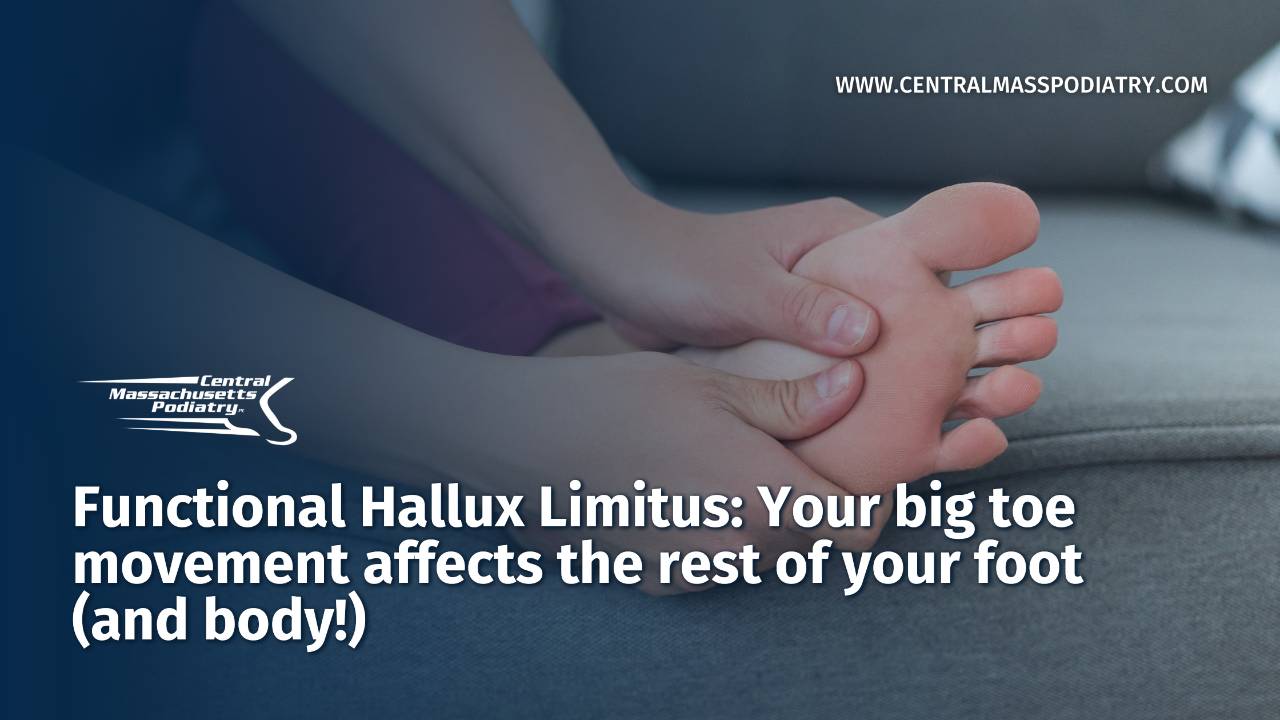
Functional Hallux Limitus: Your big toe movement affects the rest of your foot (and body!)
“My big toe hurts” is a common complaint for new patients in…
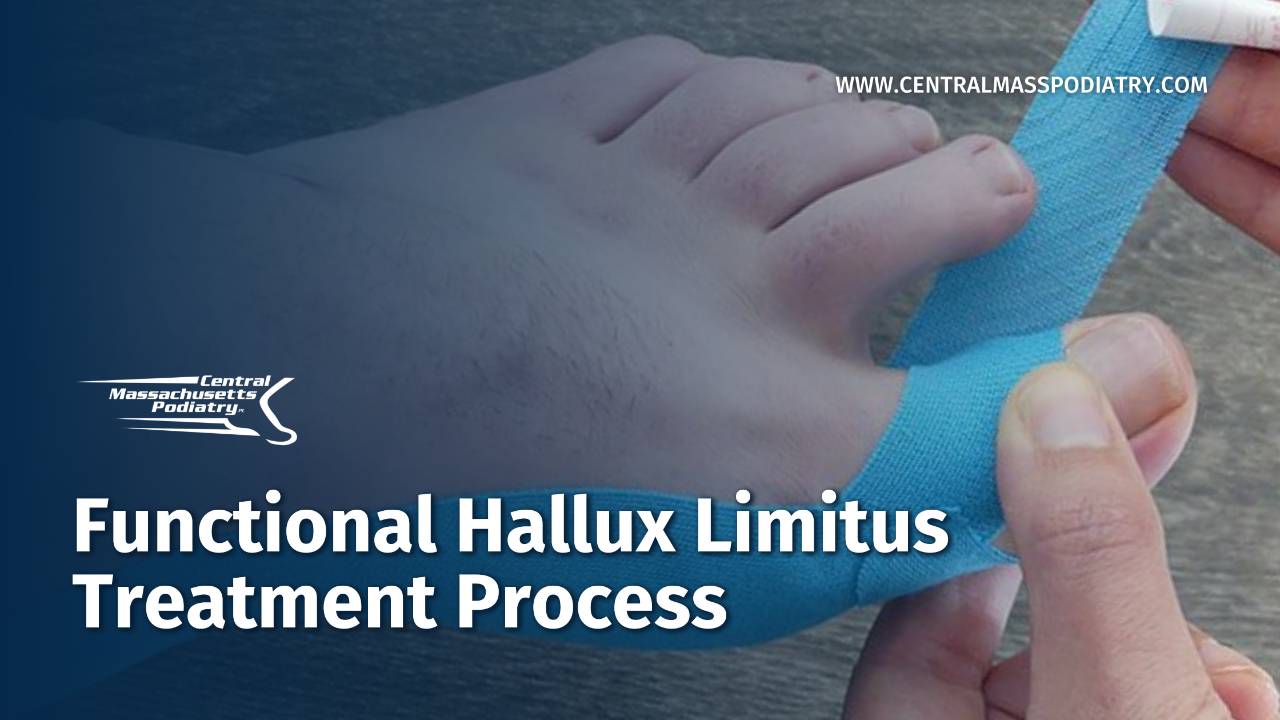
Functional Hallux Limitus Treatment Process
This is my current treatment process for patients with…
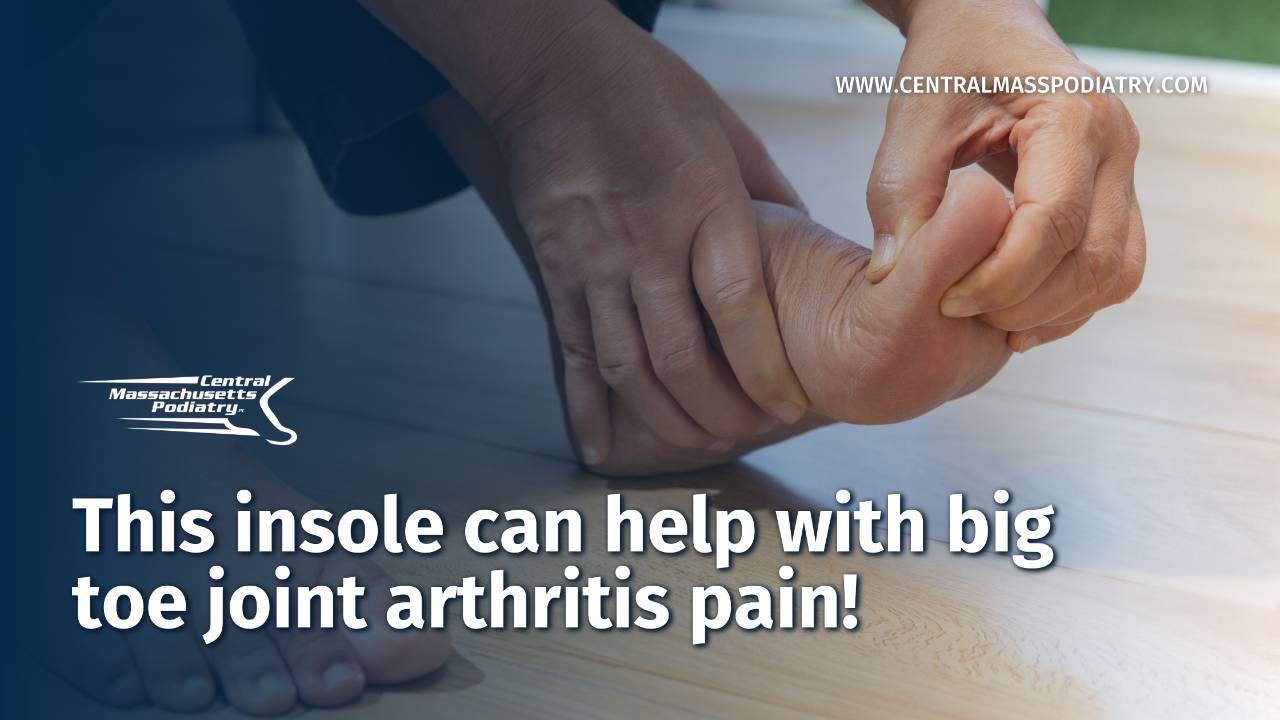
This insole can help with big toe joint arthritis pain!
I sometimes recommend this Morton’s Extension Carbon Fiber…



